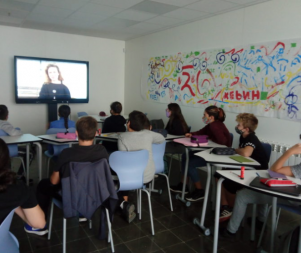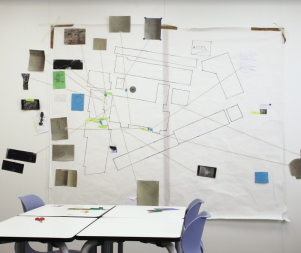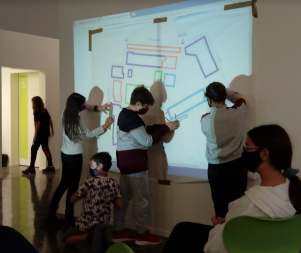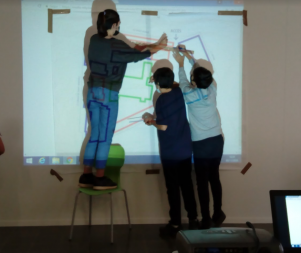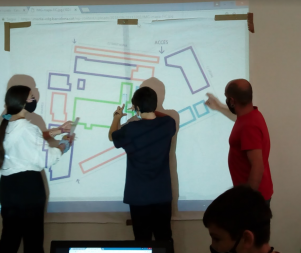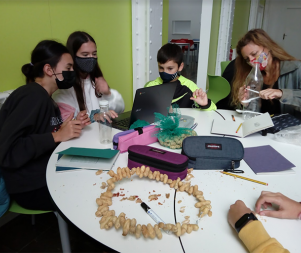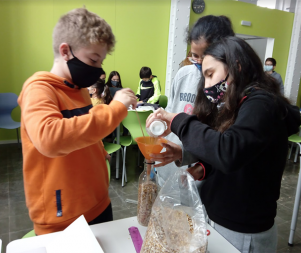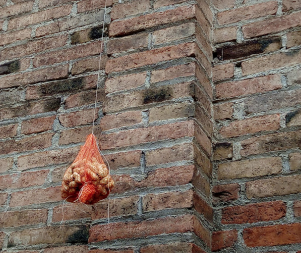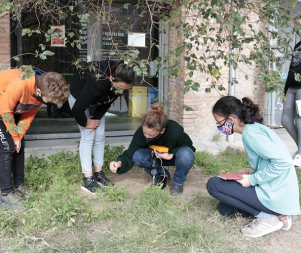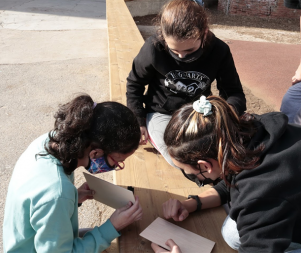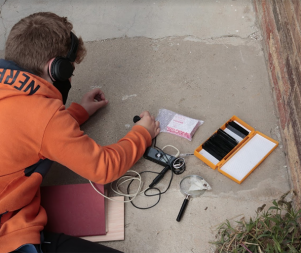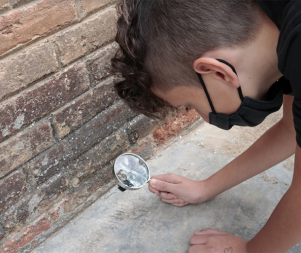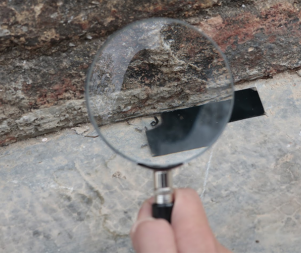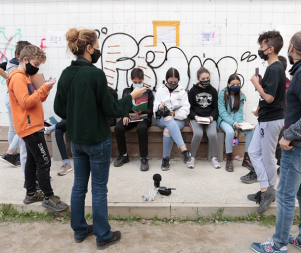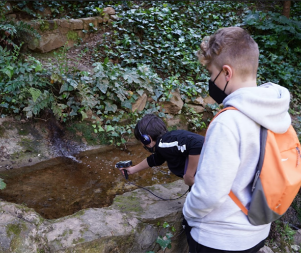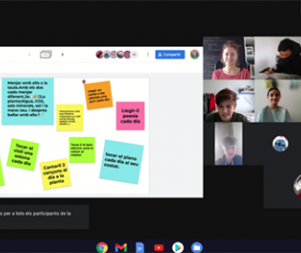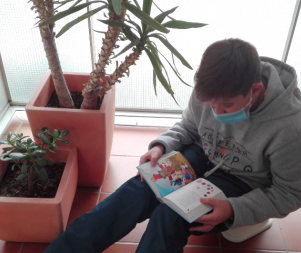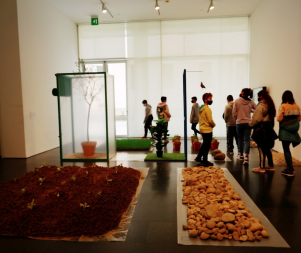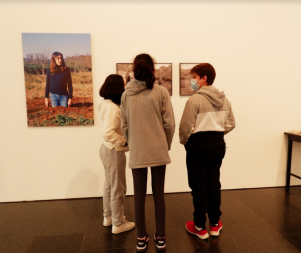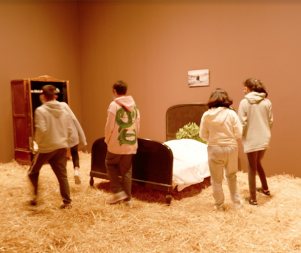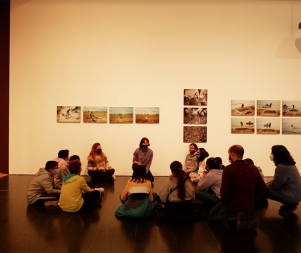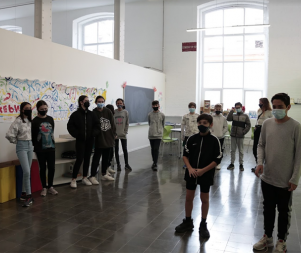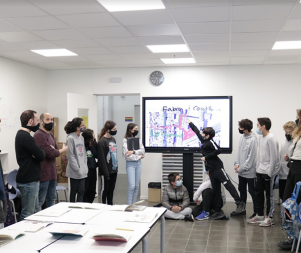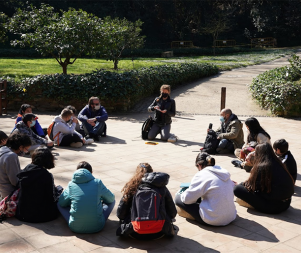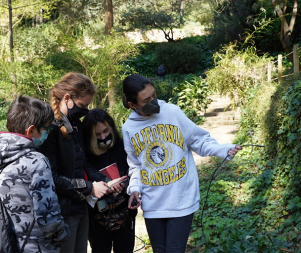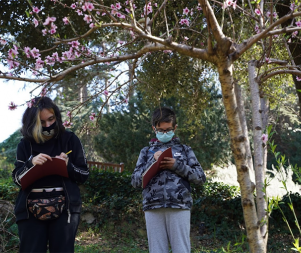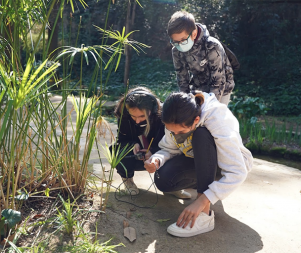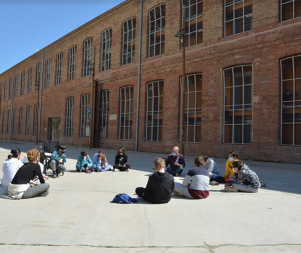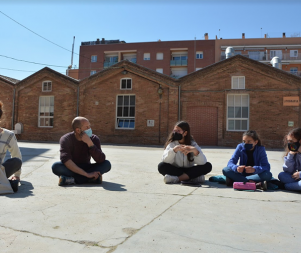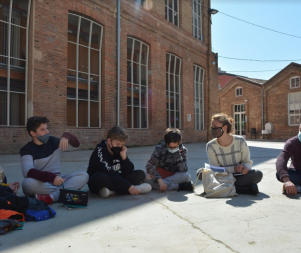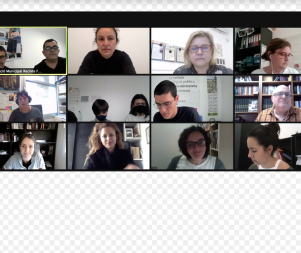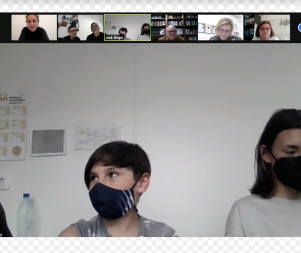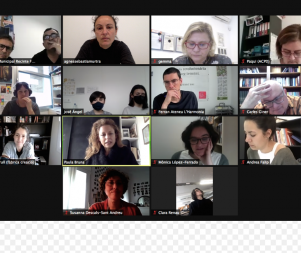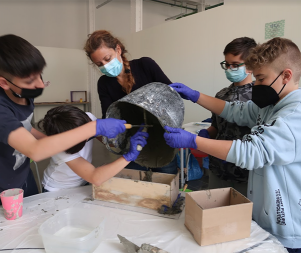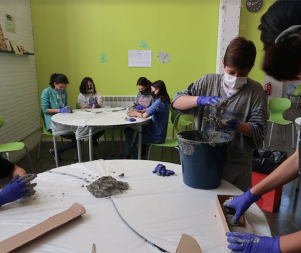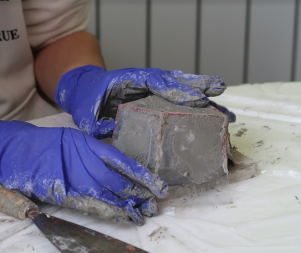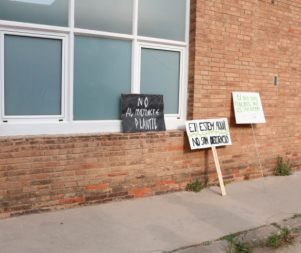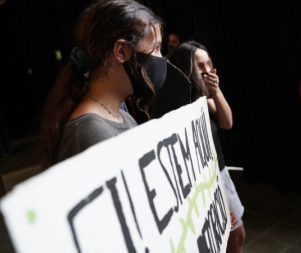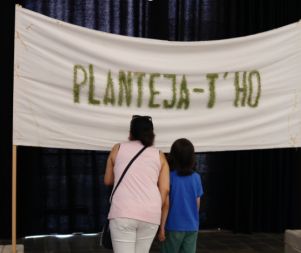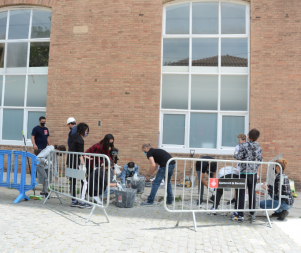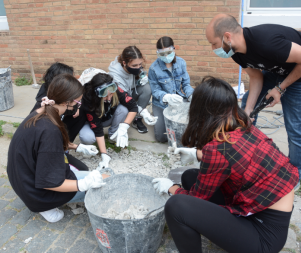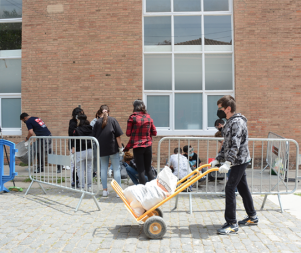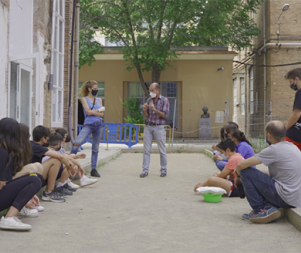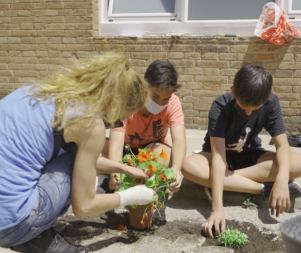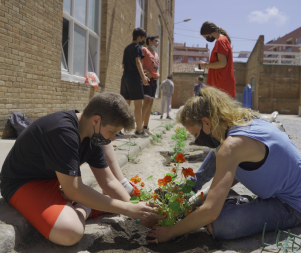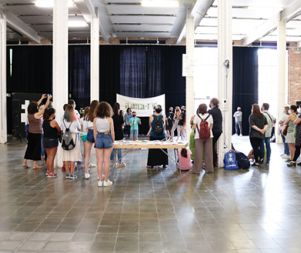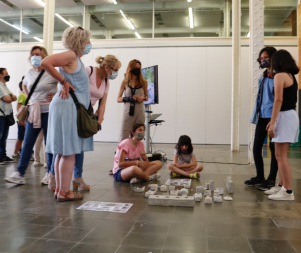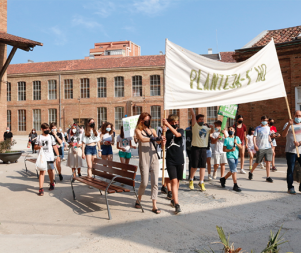- 14th EDITION 2022 / 2023
- 13th EDITION 2021 / 2022
- 12th EDITION 2020 / 2021
- 11th EDITION 2019 / 2020
- 10th EDITION 2018 / 2019
- 9th EDITION 2017 / 2018
- 8th EDITION 2016 / 2017
- 7th EDITION 2015 / 2016
- 6th EDITION 2014 / 2015
- 5th EDITION 2013 / 2014
- 4th EDITION 2012 / 2013
- 3rd EDITION 2011 / 2012
- 2nd EDITION 2010 / 2011
- 1st EDITION 2009 / 2010
Paula Bruna IN RESiDENCE at the School Vapor del Fil
Send a letter and receive another
The initial sessions of the residence begin through correspondence. After doing a little research into the work of the creator Paula Bruna, the group of students send her questions by letter. A response soon arrives in the form of a long filmed letter from Portugal answering the questions posed and showing some of the ways in which she works on her creation processes. The letter is seen in the classroom and opens up even more questions.
Map the explorations and field journal
After the first sessions with Paula Bruna, the question that will accompany the whole process is raised: with which non-human beings do we live? Are we aware of them? Do we know them? What areas do they occupy? Commencement of the research at the Fabra i Coats centre and recording of a journal and a large expanded map which is placed in the classroom.
Bird tables: with whom we live
To better observe some of the non-humans detected, it is proposed to interact with them. It is decided to create some bird tables and install them at different parts of the Fabra i Coats centre to observe them and get to know what species there are. These observations are noted both in the journal and on the map.
Endoscopic camera, sound recording, smoked glass plates
Some ways of recording and discovering non-human beings. Writing and photographing, mapping… New ways of recording non-human life are added: endoscopic cameras, sound recordings and smoked plates are used to create a record of this life that is not perceived at a simple glance. These explorations also recorded.
Ways of relating to plants
A question is posed because of the lockdown. During the lockdown, do we also live with non-human beings? And how about if we look at observing them, relating to them and writing down what we perceive in a scientific manner? This exercise resulted in a small publication, ‘Ways of relating to plants’, which contained all the proposals made by the group of students, their performance and reflections based on those days of intense observation of a plant up close.
Fina Miralles with MACBA
There is a field trip to the exhibition “I am everyone I have followed. Fina Miralles” after having jointly designed it together with the MACBA educational teams involved in the exhibition. The exhibition poses numerous reflections and questions to the group of students, who are very impressed by the artist’s various proposals, especially the installation ‘Translations. Natural elements in an unnatural space. Tree-bed’.
Teaching staff session
Organisation of all the material accumulated in order to make a presentation to the centre’s teaching staff. The session takes the form of a small guided tour during which the students propose the different questions that arose during the process. In the end, one of the discoveries of the process is revealed: what is the space occupied by non-humans at the Fabra i Coats premises? And the space specifically conceived to be occupied by non-humans? The conclusions are that around 3% of the space is occupied by non-humans. This moment is a turning point and is one of the starting points for the conception of the final piece.
Historical Botanical Gardens
A space designed by humans to be inhabited by non-humans: a botanical garden. The Historical Botanical Garden of Barcelona is visited and the same explorations and records are made as those made at Fabra i Coats. The conclusions and the volume of records is very big in a single day, compared to those carried out during the process at Fabra.
Recap: benchmarks for deciding the intervention
Specify and conceive the final action or intervention. Works by leading artists are viewed and it is decided to create some form of action that intervenes directly in the space and at the same time which is a statement in favour of non-humans. The intervention must allow a new space to be opened which may be inhabited by non-human life : first, plants and pioneer species; then small animals.
Meeting with the Board of the Fabra i Coats Centre
The proposal is presented during a meeting of the Board of the Fabra i Coats Centre, attended by different technicians, supervisors and workers from different parts of the Centre. Two students attend, accompanied by the teacher and the creator Paula Bruna in order to explain and describe the proposal and for it to be studied and validated.
Mock-ups with mud and cement
It is necessary to continue with the conception of the intervention: drawings and mock-ups defining what will later become ‘a lane for non-humans’. The mock-ups made with cement and mud make it possible to experiment, looking at what kind of seeds will be able to live and germinate in the environment at Fabra and with which it will be necessary to work.
An intervention that is also a statement
The statement aspect of the proposal also implies creating several placards with slogans defending non-humans, with the aim of generating awareness of the non-humans. One of the placards ‘ this is a plant’, in other words, the words are written with seeds that will later germinate.
Make a hole
Once permission is obtained, it will be necessary to make a hole, get cement, remove rubble... The intervention is located on one of the interior roads of the Fabra i Coats Centre, in front of Institut Vapor del Fil. On this road there is a cycle lane, a lane for people, vehicles and there will be a lane for non-humans measuring more than twenty metres. The tasks required in order to place fertile soil where plants can grow get under way
Seeding and planting
Placing the fertile soil, sealing it with seeds from pioneer species and planting different local and resistant plants. The species and how to distribute them along the lane are defined with the assistance of the biodiversity programme of the Urban Green Areas, Biodiversity and Ecology Directorate.
Presentation and statement
The “Plant-it-yourself” exhibition takes place in one of the multi-purpose rooms at Fabra i Coats on Friday 11 June. Parts of the process, small projects, journals, placards and the expanded map are displayed in the room. It is attended by classmates, family members, teachers and other people from the field of culture and collaborators in the creation process. The presentation is made in small groups in the form of a tour. After a while, the group of students, the teacher and the creator take up the placards to lead a delegation of people to the non-human lane. Once there, ‘nendo-dango’ seed bombs are distributed to extend the protest and generate new spaces for non-humans in the city.

